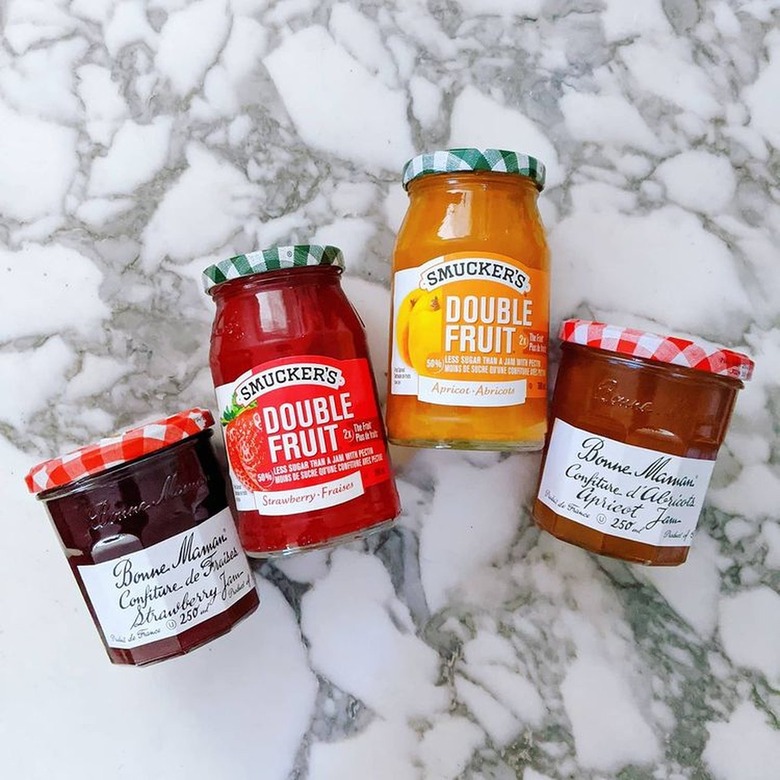This Is Where You Should Actually Be Storing Your Jam
Jam is one of those food products that, when we really think about it, we don't know where to store it. After all, most jams contain preservatives (like sugar and salt), so do they have to be stored in the refrigerator 24/7? Or, do those preservatives mean that they can safely be stored in a pantry?
To answer all our jam storage queries, we reached out to Isabel Maples, a nutritionist and registered dietitian with the Academy of Nutrition and Dietetics.
"Jams and jellies can be stored in the pantry or cupboard if unopened. Once opened, jams and jellies should be stored in the refrigerator," Maples says. "Some argue that jelly's high sugar content coupled with its low pH and low moisture content mean that it can be left at room temperature once opened. Food safety experts disagree. Check the back of the jar and you'll find advice from manufacturers to refrigerate after opening."
Maples also cites a recommendation from Smucker's, which states that fruit spreads, jams, jellies, and fruit preserves should be refrigerated after opening. If they are left out for over 48 hours, they should not be consumed.
To increase your jam's shelf life, Maples recommends that you only use a clean knife or spoon when dipping into the jar. "Once jelly/jam starts to get old, it may turn darker in color, taste a little tarter, and liquid may form at the top of the jam," she says. "If there is mold, the product should be discarded immediately and not consumed."
So there you have it: After you open it, jam belongs in the fridge.
